ESALA 2021 Master of Architecture
ANIMATE MATTER
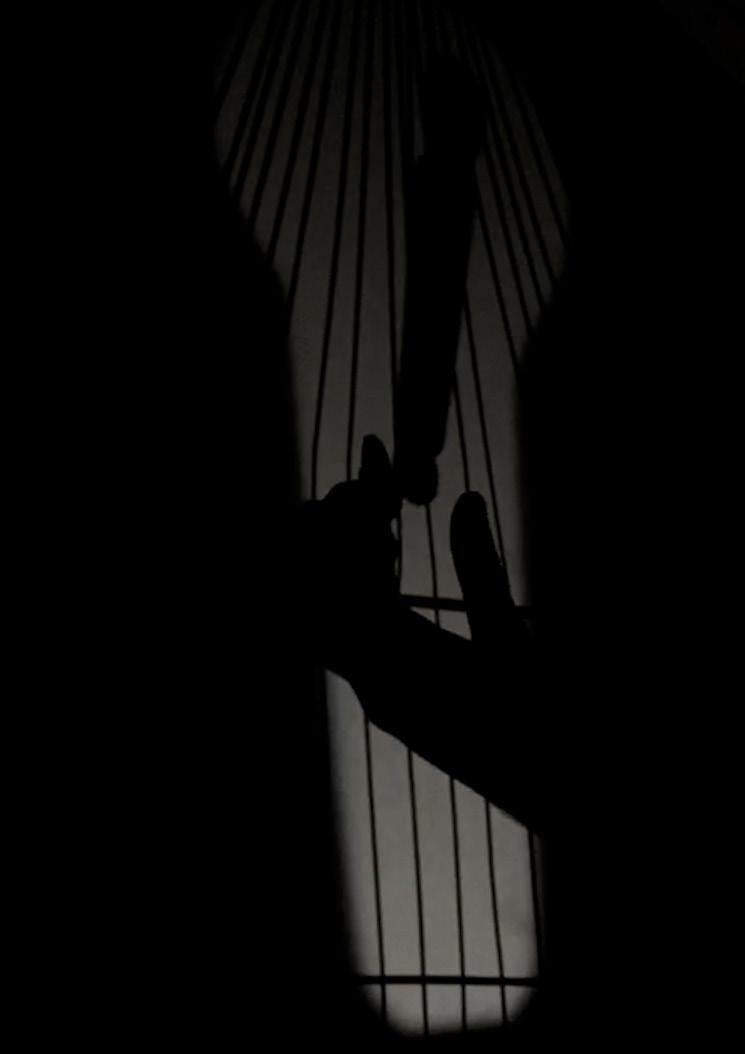
Mark Dorrian
Ana Bonet Miró
Paddi Alice Benson
ANIMATE MATTER



This catalogue is part of a collection published by the Edinburgh School of Architecture and Landscape Architecture (ESALA), Edinburgh College of Art, University of Edinburgh. It documents student design work produced in the Master of Architecture (MArch) programme in 2020-21. Each catalogue describes one of the following five design studios in the MArch programme. The full collection is available to view online at issuu.com/eca.march.
Catalogues 2020-21: Animate Matter.
At Home. Where I am is Here. Countryside [Outside] Architecture. island territories vii: Island Temporalities.
Catalogues 2019-21: Parasituation [Ahmedabad].
COVID-19
Over this past year, the work of the Master of Architecture programme has continued to negotiate the disruption caused by the Covid-19 Pandemic. While our normal studios and workshops have remained closed, during the first semester, we managed to implement a form of hybrid teaching where groups of students and tutors could be safely seated around large tables with those working remotely joining via digital screens. Unfortunately, with a further tightening of lockdown at the start of the second semester, we were forced to return to working from home. During this period, for both students and staff alike, teaching days and their associated forms of online group tutorials, reviews and events became as important socially as they were academically. While we all miss the physicality of finely crafted models and ink drenched paper, the work presented through these volumes continues as a testament to the invention, creativity and resilience of the student body and the unfaltering commitment of the MArch programme staff.
First published in 2021, eBook published in 2024. Published by The University of Edinburgh, under the Creative Commons Attribution Non-Commercial Non-Derivative 4.0 International License (CC BY-NC-ND 4.0).
Dorrian, Mark, and Ana Bonet Miró. Animate Matter. Edinburgh: University of Edinburgh, 2021.
Text © Authors, 2021.
Images © Authors and Contributors, 2021.
Animate Matter.
ISBN (eBook): 978-1-912669-99-8
ESALA 2021
Master of Architecture
ANIMATE MATTER
Mark Dorrian
Ana Bonet Miró
Paddi Alice Benson
ANIMATE MATTER
- ANIMATE MATTER: EXTRACTS FROM THE BRIEFS
A METAMORPHOSIS OF AN ECOLOGY OF THINGS
TOM CARNEY / LEWIS EVANS
AND THE
REGIONS OF HERESY AMY
A SYSTEM OF TWO SUNS
DRYBURGH BREVIARY
ANGUS HENDERSON
THE MESSENGER HEATHER ANDERSON + CHLOE BURDEKIN
SGITHEACH SCREENINGS
HEATHER ANDERSON + CHLOE BURDEKIN
BREAKING FAST CAMERON BOYD / ALASTAIR SINCLAIR
INFRASTRUCTURE REANIMATED
ALASTAIR SINCLAIR
A SLOW DESCENT INTO MADNESS
LEWIS BROWN / JAMES GILLIS
RIONNACH MAOIM
LEWIS BROWN
THE DOUBLE
JAMES GILLIS
LIQUIDITY OLIVER SONG / ALICE ZHAO
WORLD BRIXTON
OLIVER SONG
WALLS, GARDENS AND WATER
ALICE ZHAO
CONTENTS
DRABBLE
HENDERSON
/ ANGUS
FLESH + TEXT MARK WOULFE FILM FILM FILM FILM FILM FILM FILM 01 12 14 18 22 24 28 32 36 40 44 50 52 56 60 64 68 70 74 01 08 10 06 07 02 05 09 11 ANIMATION
DETRITUS TOM CARNEY
OF
MASK HOUSE LEWIS EVANS 03 THE CREATORS
COW MARK WOULFE 04
AMY DRABBLE
AFTERPIECES PETROS TSIFOUTIDIS / HONGQUI WANG
ANIMATING MODIANO
PETROS TSIFOUTIDIS
RE-ANIMATING A FABRIC FACTORY
HONGQUI WANG
DUBBING PEITONG LIU / YIFEI HUANG
NOMADIC PROJECTIONISTS
YIFEI HUANG
A CHOREOGRAPHY OF FOUND OBJECTS
SAMUEL PICKERING / SARA SAKO
COCKENZIE GENERATING STATION
PICKERING
BREEDING DUST
SARA SAKO
A COAT BETWEEN BOTHIES JOANNA HOBBS
THE LAST SNOW
JOANNA HOBBS
THE SECOND BOOK OF GENESIS OLIVER MONTEITH
ARMATURES OF ANIMATION
OLIVER MONTEITH
TRANCE ZEYU LIU
ANOTHER ARTIFICIAL ISLAND
ZEYU LIU
THE DEATH AND DREAMS OF EDIBLE ART EVELYN SUNG
THE DEATH AND DREAMS OF EDIBLE ART EVELYN SUNG
BIBLIOGRAPHY & IMAGE REFERENCES
ACKNOWLEDGEMENTS
-
78 82 86 90 94 98 102 108 112 116 118 122 124 128 130 134 138 142 145
12 14 16 18 19 20 21 13 15 17 DUBBING PEITONG LIU
FILM FILM FILM FILM FILM FILM FILM
SAMUEL


ANIMATE MATTER: EXTRACTS FROM THE BRIEFS
‘Matter has been given infinite fertility, inexhaustible vitality, and, at the same time, a seductive power of temptation which invites us to create as well. In the depth of matter, indistinct smiles are shaped, tensions build up, attempts at form appear. The whole of matter pulsates with infinite possibilities that send dull shivers through it. Waiting for the life-giving breath of the spirit, it is endlessly in motion. It entices us with a thousand sweet, soft, round shapes which it blindly dreams up within itself.’
… ‘Can you understand,’ asked my father, ‘the deep meaning of that weakness, that passion for coloured tissue, for papier-mâché, for distemper, for oakum and sawdust?
This is,’ he continued with a pained smile, ‘the proof of our love for matter as such, for its fluffiness or porosity, for its unique mystical consistency. Demiurge, that great master and artist, made matter invisible, made it disappear under the surface of life. We, on the contrary, love its creaking, its resistance, its clumsiness. We like to see behind each gesture, behind each move, its inertia, its heavy effort, its bearlike awkwardness.’
Bruno Schulz, ‘Treatise on Tailors’ Dummies; Or, The Second Book of Genesis’ from The Street of Crocodiles (published in Polish as Sklepy cynamonowe [1934]).
1
The Immediate and the Distant:
Perspective / Plan Drawing and Montage
 Lewis Evans
Lewis Evans

3 MARK DORRIAN / ANA BONET MIRÓ / PADDI ALICE BENSON | ANIMATE MATTER: EXTRACTS FROM THE BRIEFS
SEPTEMBER 2020:
ANIMATE, ATMOSPHERICS, FILM, DOUBLING …
The usual approach of MArch studios in ESALA has been to identify a location and leave the programme open for students to develop propositions. In this year of Covid, without the possibility of field trips, we propose to reverse this by defining a programme but leaving its location unspecified. This will allow students to themselves find sites for the project – which, for those working remotely, could be close to where they are based.
The project will be for a double house for identical twins who animate matter using stop-motion animation techniques on celluloid film. As well as living spaces for them, there will be an animation studio, spaces and machinery for developing and editing, and a public screening theatre where the films are shown. This will be a design that involves thinking in detail, but in a particular way.
The figures who lie behind the brief are The Brothers Quay, the Americanborn London-based animators, renowned above all for their hallucinatory short film Street of Crocodiles (1986) based on the writings of Bruno Schulz. The Quays’ film is not narratively constructed in relation to the events in Schulz’s book, but draws freely on the motifs and materials that overflow it. However, it is the extended reflections on the vitality of matter given by the narrator’s (demented, visionary, or both?) Father over a number of evenings that seem particularly important – as if his discourse was a way of thinking about animation, or the animation was a way of thinking about it. The film scholar Michael Atkinson has written that: ‘To watch, indeed to enter, the impossible, haunted night of a Quay Brothers’ film is to become complicit in one of the most perverse and obsessive acts of cinema.’ ‘A submerged, animistic life-force’, he goes on, ‘throbs within the walls, under the floorboards, and inside every morsel of inanimate dross.’1 Speaking of the objects with which they work, the Brothers Quay describe their activities as not so much as conferring motion to a thing as releasing a force that is already there, stored up within it: ‘… found objects, dispossessed objects … they possess memory. History is something they’ve brushed up against, and they hold all of history in their bodies. And for us it’s a way of wanting to release that side of their history …’. 2
1 Michael Atkinson, ‘The Night Countries of the Brothers Quay’, Film Comment, 30(5) (September–October, 1994): 36–44; 36–37
2 Damon Smith, ‘“They’re Panicking, Look at Them!” The Brothers Quay’, in Gary Morris, ed., Action! Interviews with Directors from Classic Hollywood to Contemporary Iran (Anthem Press, 2009): 207–224; 211.
The title of the studio, ‘Animate Matter’, carries a double sense. On one hand, ‘animate’ is an adjective describing matter – matter is animate, it has force, it moves, it transforms. But on the other, ‘animate’ is a verb and it becomes an imperative phrase – the challenge is to animate matter, to set it in motion, and to reconceptualise how architecture could be thought in those terms. Basic activities of everyday life can be re-described as processes of animation – to boil water is to excite it, put its matter into motion by transferring energy to it. Likewise, cooking is an animation of matter, whereas freezing slows it down to an almost imperceptible rate (like a film-maker’s 1/24th-of-a-second ‘freeze-frame’). The shape of roofs animates water, while glass flows slowly downward in window frames, and switches set the flow of current coursing through electrical circuits. What if the whole project is thought of in terms of a world of lively things, and that architecture turns out to be as much an agent and motivator of that animation as does stop-motion film technique?
At the same time, in doing this, we want to pay attention to the particular atmospherics of Schulz’s writing and of the Quay Brothers’ film. For the narrator’s Father, the atmosphere of a place, the feeling it gives us, could condense into strange physical manifestations of matter ‘which sometimes appeared in certain strictly denned environments, such as old apartments saturated with the emanations of numerous existences and events; usedup atmospheres, rich in the specific ingredients of human dreams; rubbish heaps, abounding in the humus of memories, of nostalgia, and of sterile boredom.’ 31 In the case of the Quay Brothers there is a similar material sense of atmosphere. Here they refer to Francis Bacon’s phrase, a ‘thickening of reality’: ‘What we could call the barometric pressure of mood or an atmosphere can be as finely wrought as any verbal explication, and we think that’s a subtlety the visual artist can achieve that speaks volumes beyond words. It can be very precise and still very elusive.’ 42
We begin with a five-week project to make a film and a drawing that is developed in some way from it – that extracts and represents material from the film in a graphic form that, although static, tracks movements and metamorphoses.
3 Bruno Schulz, ‘Treatise on Tailor’s Dummies, Conclusion’, in The Street of Crocodiles and Other Stories (London: Penguin Classics, 2008): 36–40; 37.
4 Mark Morris and Neil Spiller, ‘The Shadowy Thickening of Space and Time with Chance: An Interview with the Quay Brothers’, ArchitecturalDesign 88(2) (March / April, 2018): 72–77; 76–77.
5 MARK DORRIAN / ANA BONET MIRÓ / PADDI ALICE BENSON | ANIMATE MATTER: EXTRACTS FROM THE BRIEFS
First make, or find, or find and rework a box that is of a size you can travel with and that will form the spatial frame in relation to which your film will be made. It is up to you what scale this might be – it could be small, like a matchbox; or perhaps shoebox size; or something like a hollowed-out book; or a suitcase; or possibly even larger … You will need to be able to carry it, remember that. Think of it as a frame, a stage, a space of encounter, a miniature universe. It may look quite different at the end of the five weeks than it does at the start – it may be cut into, subdivided, augmented by various devices, dismembered, dissolved: an animate thing in its own right.
Use this construction to develop a short film that explores and experiments with animating materials. Work with found and discovered things and investigate their metamorphic possibilities and transformations in their encounters with one another through the medium of the moving image. You have a great deal of freedom here to develop your own approaches to the film. In their Street of Crocodiles, the Quay Brothers work with figurative puppets, but also other things become animate and lively (woodscrews, watches, dandelion seeds, dust, meat …). There are no expectations or requirements that you work with anthropomorphic figures. If anything, the emphasis in this project is about finding life in less expected things – in a spoon, the pages of a book, soil, sawdust, the ‘stuff’ of matter. Animation plays with and makes evident the structural possibilities of film, and it puts these to work to produce a transformed world. This is not just about the animation-effect of stills played at 1/24th of a second, but it is also about the possibility of reversing film (an ice-cube forms out of a pool of water) or of speeding up or slowing down time (the Czech surrealist Jan Švankmajer often filmed organic material rotting, its form breaking down and then reemerging again, or objects like pencils re-forming from wood-shavings and carbon dust).
But animation is not only about the structural possibilities of film, or what is within the frame – the animation that is out there in the world around can also enter directly. The Quay Brothers have described how, in their studio, they use mirrors to reflect the constant transformations of light filtered through moving clouds and we can see the strange fluctuating effects of luminosity this produces in Street of Crocodiles. Or wind is something that might be used at points to agitate materials – here you’re likely to be recording in real time as opposed to the set-by-step process of stop motion.
In view of this, when you are making the film you are asked not only to work in one place, but to explore the effects of moving the box to different locations and the different kinds of juxtapositions that are set up. In this case the box-camera relationship becomes a way of collecting different lights, sounds, atmospheres – and also potentially materials, for you might find things in these different locations that are collected and animated. Maybe at times we’re looking directly from above, seeing into the box but also what lies around it; or we pull back and locate the position of the box on a street, in a river valley, on a beach, on wasteland. Maybe the animation is to do with movement around the box and the observation of it (trying to see or break into it, or moving back, step by step, until it becomes a tiny point) rather than being about the interior.
NOVEMBER 2020: SITES, FURNITURE, MIRRORINGS, MINGLINGS …
We want now to quickly bring the interests and thinking developed in your films into contact with ideas you have about the sites you might work on and the overall approach to the project that you are going to take. The character of your films, and the materials that you worked with in them, will lead you toward specific sites – but also to a more explicit and articulated sense of what kind of animation and film-making will take place in your project.
We won’t define a specific schedule of spaces for the accommodation –this is for you to elaborate as your project develops. However, the houses should allow for sleeping, washing, cooking, eating, waiting, reading, resting, thinking. The studio should allow the relational staging of things and include surfaces (tables, screens, etc.) for animation. It should have a well-considered relation to sources of light, and to other spaces – internal and external – around. There is to be a darkroom for the development of photographic materials, and areas for cutting and editing film and for recording and editing sound. In addition, there needs to be a workshop/ making area, and storage for film and materials. The public screening space is where the films made by animators will be first shown to an audience. It is to include a projection room as well as an interior auditorium for guests. Strategies for screening the films may also engage other parts of the architecture and exterior conditions. The overall size of the auditorium will differ between students’ work according to the character of their project and
site. There is to be a mechanical ticket-office and associated entry sequence, a kitchen area for the preparation of food and drinks, and WC facilities. Note that this list does not imply that these are all discrete spaces – there may be complex hybridisations, interpenetrations, conjunctions, mirrorings, minglings …
We are hoping for an intensity of elaboration across scales in this project and as part of this you are also asked to develop designs in detail for 4 animate furniture-objects that inhabit the architecture: an animating table that can redirect light and channel elemental forces; a double-chair and related apparatus for arguments and reconciliations; the mechanical ticketoffice and entry; and a walk-in wardrobe with a device for viewing the horizons of things, which contains a stair to somewhere else.
Or you can propose others …
FEBRUARY 2021: ASSEMBLY, DRAWING, MANUAL, MATTERS IN MOTION …
During these weeks we will research and work through technological and environmental aspects of your projects that you yourselves specify. Don’t think of this as a purely technical exercise independent from architectural concerns, but rather as a way of bringing the architectural characteristics of the project to the next level of detail. At all times we are aiming to productively interrelate the conceptual, material, spatial, experiential, technical and environmental aspects of the projects, which are all tightly and inevitably bound together. The constructional assemblage of the building is as much an issue for intelligent conceptual thinking as was the initial stage of the project.
The key production for this component will be a special drawing that you make of a part – or interrelated series of parts – of your project, which acts as a powerful material demonstration and ambitious expression of it. It should incorporate and demonstrate the complex constructional assembly of your architecture, as well as conveying its experiential and ‘atmospheric’ effects and actions. This might involve one or more of your animate furniture-objects, but it is not to be of them alone – it is also to engage the fabric of your architecture and the way you envisage it working as a device
of animation. Choose something to study that is particular to your project and can really disclose it – i.e. avoid generic, banal, and boring approaches … zzz.
It is up to you to work out how to compose the drawing. It is to show how things are put together and meet one another, as well as the resultant spatial and material quality and effects – it will involve detailed scale and could be sectional-volumetric or exploded. It might use a variety of different techniques and the drawing itself be thought of as something animated –with elements of the drawing transforming into one another, for example. We will discuss. The drawing is to show constructional information, but is itself not to be textually annotated. It should, however, be reproduced at a smaller scale with full annotation in the animation manual, of which more below.
In addition to the drawing, each student is required to produce an animation manual, which diagrammatically shows the various strategies for the building – to do with construction sequence; structure; environmental strategy; access, circulation and escape; etc. Include also a retrospectivelywritten brief, setting out the components of your project with area dimensions. Think of this overall as a kind of handbook and supplement for the reading of the drawings. We will call it an ‘animation manual’, as opposed to, say, a ‘technical manual’, because it shows how these things are matters of (and in) motion – air, water, smoke, energy, people, materials, and so on …
Mark Dorrian
Ana Bonet Miró
Paddi Alice Benson
9 MARK DORRIAN / ANA BONET MIRÓ / PADDI ALICE BENSON | ANIMATE MATTER: EXTRACTS FROM THE BRIEFS


11









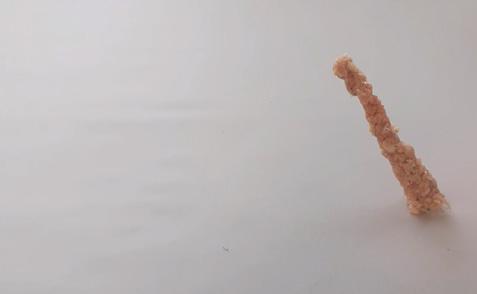



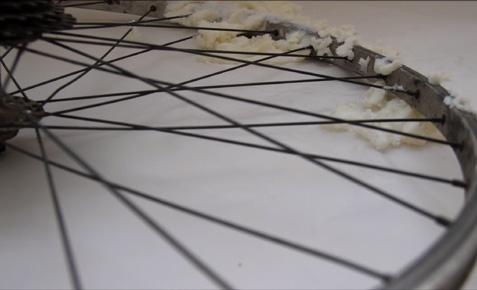

h ttps://media.ed.ac.uk/media/Tom%20Carney%20%2B%20Lewis%20Evans_A%20Metamorphosis%20of%20an%20 Ecology%20of%20Things/1_bk3t000v
13
A Metamorphosis of an Ecology of Things Tom Carney / Lewis Evans
01

ANIMATION OF DETRITUS – QUAY’S YARD
PRESTONPANS, EAST LOTHIAN, SCOTLAND
TOM CARNEY
Situated on the south coast of the Firth of Forth, the salvage yard formally known as ‘Burns Yard’ collects and sells all manner of detritus and household goods to people visiting from the Edinburgh area. With a strong interest in the collection of things and in the inspiration that can be drawn from found objects, stop motion animators Stephen and Timothy Quay are imagined as inhabiting the yard in order to use it as a constant source of materials. The project aims to redistribute the space of the yard so that it become an animator’s playground, setting up relationships and juxtapositions between diverse objects of varying scales, both within the yard and beyond (such as the shipping, oil rigs, etc., that pass along the Forth, or the historical industrial infrastructure of the area).
Through a series of parallel walls built from materials already on site (such as old, corrugated sheets and wooden fencing), these relationships start to form. Contained within three thin metal wrap-around wall ribbons, the two brothers’ houses, studio and screening theatre are then able to perch above the yard below, supported by the lower walls. All together this creates a new phenomenological experience for those using the yard, with a play of materials, shadows and sounds enriching the space. Through the use of various mechanisms, such as pully systems and openings in the spaces above (sometime hidden in furniture-objects), the brothers now use the yard as micro-landscape through which to build and screen their animated films.

15


SitePlan:MappingBurnsYard(previous,right)
ExplodedIsometric,SetofParts(topleft)
DoubleHouseSection(bottomleft)


DoubleHouseIsometric,DevicesforViewing(topright)
BetweentheWalls,PerspectiveViews(bottom)

| ANIMATION
DETRITUS
TOM CARNEY
OF
17

MASK HOUSE – FOR COLLECTING AND ANIMATING A METAMORPHIC ECOLOGY OF THINGS
BURNS’ YARD, PRESTONPANS, EAST LOTHIAN, SCOTLAND
LEWIS EVANS
Decomposing moss at the bottom of a wine glass and the flashing lights of industrial marine structures crossing the horizon are both examples of the all-encompassing, transformative scales of animation. My proposal for a house for the Brothers Quay is driven by an attempt to detect these wide-ranging animative happenings and is intended to create crossroads for their points of exchange. Constructed from harvested material from the yard, the house rises – animal-like – to perch behind a large wall, facing the coast. The building sits in a strip of anthropomorphic garden, planted with rows of rotting glasses and beds of mechanised flowers. Rooms or enlarged-scale furniture pieces are extruded from the front of the house and intertwine with structures attached to a large screen above the yard’s perimeter wall. The furniture pieces observe specific visual, sonic, and wider sensorial animations occurring in the house’s surroundings. Some also form places for these accumulated animations to be trapped, scrutinised, metamorphosed and re-animated by the Quays. Through the use of these devices, which can be adjusted in an ad-hoc nature by the animators, the house is intended to stimulate the creation of the metaphorical universes that the brothers create in their films.
The house is mask-like with its extrusions and attachment of pieces of structure, mask-like in its concealment of private inhabitation in public surroundings, and mask-like in its conjuring of the unseen occurrences of animation within the eternally-decomposing landscape of Burns Yard and the wider coastal surroundings.
02


19





ZoomorphicFaçadeModelStudies (previous,topright)

UnfoldedSiteDrawing:SoundMirrors,EarthCuttersandObservationPoints(previous,right)
StudioView:WardrobeforObservingtheHorizonofThings+Table,the“WarperofFermentedLandscape”(left)
Elevation/CladdingLardModel(bottomleft)
ExplodedTechnicalIsometric /FirstFloorPlan(right)
FaçadeModelStudy(bottomright)
LEWIS EVANS | MASK HOUSE
21





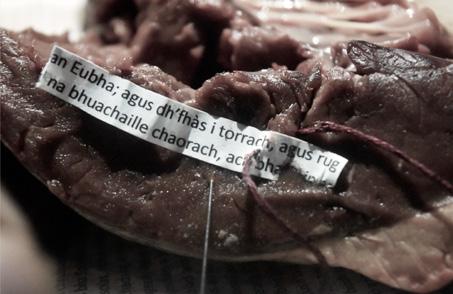










https://media.ed.ac.uk/media/Mark%20Woulfe_Flesh%20%2B%20Text/1_dtlnraap 23
Flesh + Text Mark Woulfe

THE CREATORS AND THE COW COUGAIT, EDINBURGH,
MARK WOULFE
SCOTLAND
This animation studio is an odyssey through the process of creation. In order for the animators to create a film, a cow’s life must be taken, representing the disharmony between humans and animals. The project pushes the wilful logic of the slaughter of animals for meat to an extreme by repositioning it as a form of – and as providing materials for – art. This concept viscerally brings to visibility conflicts around animal life in modern society. After the murder of the cow, the architecture ascends, its spaces sequenced in relation to the dismemberment of the corpse. As the carcass further disintegrates, the art of the creators and the spaces of the building – spaces designed for death and violence – develop more.
The cow is used in every step of the animation process, including script writing. Through the process of flaying, books are created out of parchment and then stored in the Edinburgh Central Library. This studio interconnects with the library physically in several places, extruding from its steel skin and projecting into the large stone mass. The creators can walk between the two buildings on their odyssey of creation, as well as up and down the stairs that lead into the rooms of death. While the creators walk up alive and the cow is hoisted up dead, both eventually arrive at the top. There, once the animation is concluded, bedrooms are found in order to rest.
03

25


FilmDrawing:Flesh+Text(previous,right)
CutawayAxonometricandLibraryConnections(left)
JourneyofaCow:Axonometric,ElevationandSection(right)
CougaitSection(bottomright)


VECTORWORKS
VECTORWORKS
MARK WOULFE | THE CREATORS AND THE COW VECTORWORKS
VECTORWORKS
27
VECTORWORKS EDUCATIONAL VERSION







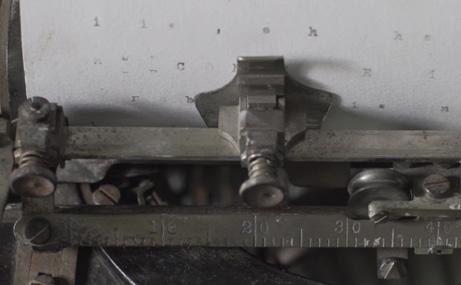








https://media.ed.ac.uk/media/Amy%20Drabble%20%2B%20Angus%20Henderson_Regions%20of%20Heresy/1_vqs1c8ff 29
Regions of Heresy Amy Drabble / Angus Henderson


31

A SYSTEM OF TWO SUNS – TRAVERSING A CONVERSATION INCHKEITH, FIRTH OF FORTH, SCOTLAND
AMY DRABBLE
Building on the thoughts, concepts and ideas developed through the initial film Animate Matter: The Regions of Heresy, the project is the conceptual and tectonic development of a ‘situation’ – a design inquiry into a double dwelling for a set of twins. The project draws upon the story of two infants who in 1493 were sent, on the orders of King James IV, to live with a mute woman on the island of Inchkeith – in an attempt to discover the ‘original language’, that of God.
The project considers communication as a form of animation and explores, through the design of analogous architectural structures that are identified with the twins, how they might understand the world they inhabit. Childlike in nature, they appear to develop a scheme consisting of two separated dwellings, with a zone of communication between. This is a space striated with tightropes and punctuated with pulley-systems and forgotten things, which would have been used in various ways to communicate, by traversing up, down and between the towers.
Culminating in a project that is uninhabited and absent of people, the architecture itself becomes a figuration of the twins – of what they were or could have been. The remnants of their houses and apparently abandoned belongings are the only elements that remain to convey their story. A fairytale-like world is created to be entered and explored, where endless possibilities of who the figures are, or were, can emerge out of the vacant remains.
04

33


UnitedinIkigai.ViewFrom130Elektra’sSpaceofCatharsisandAbsorbanceTowards3122Florence.(previousright) ConversationCapturedinTime.EdgePerspectivalSectionLookingNorthUndertheLightoftheLighthouseandMoon.
|
35
AMY DRABBLE
A
SYSTEM OF TWO SUNS

DRYBURGH BREVIARY
DRYBURGH, BORDERS, SCOTLAND
ANGUS HENDERSON
Dryburgh Breviary is a project for thickening time within a liturgy of hours. This liturgy of hours – the daily ritual of the twin animators – is extracted from entanglements of the habits of Dryburgh Abbey and the Belles Heures, an early thirteenth-century book of hours by the Limbourg brothers, medieval illuminators. These constructed hours are charged religious moments with extravagantly specific programmes, which are arranged around an adjacent sundial. The project is located on a flood-plain of the River Tweed, and whilst the initial focus was on Dryburgh Abbey, the proposal came to take the form of an ‘eclipse’ of the abbey located on the other side of the river. The new project and the abbey itself are linked to St. Cuthbert’s Way, which passes through the centre of the proposal.
The seven aforementioned hours are enclosed within a poché landscape and covered by double-skinned ‘cloches’ which mediate the sky and cosmos. Visitors encounter a labyrinth with gallery spaces and nooks for viewing the work and life of the twins, culminating in a central courtyard where their work is projected onto retractable screens. The twins, whose daily ritual of work and life tracks the hours, live in the attic – that is, within the thickness of the structure of the cloches. Stretching out into the external landscape, mounds rise softly from the clay – remnants of the construction of the inner cloche skin – and a channel extends into the Tweed that utilises and registers, through flooding, the water.

05


37



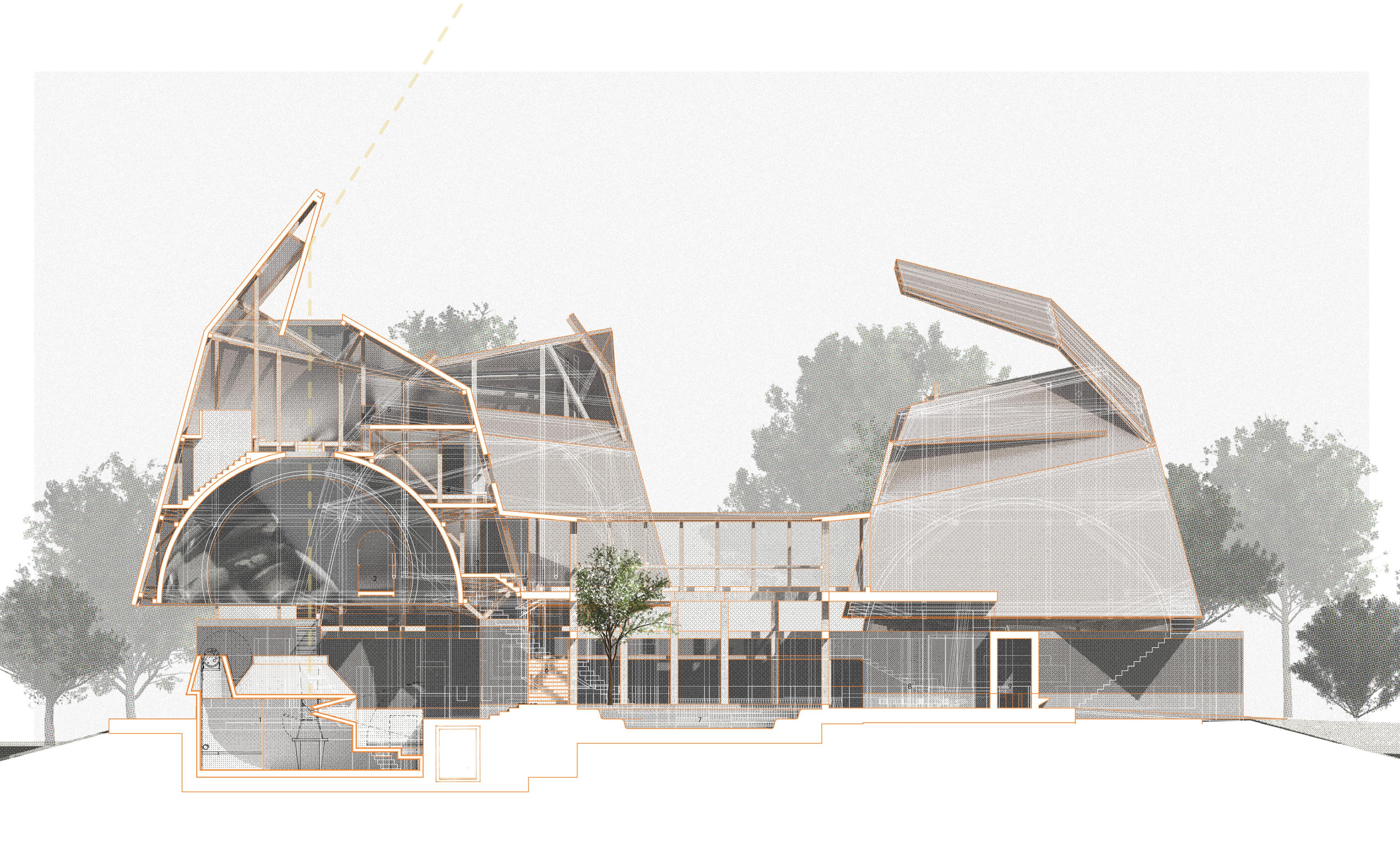




IsometricSectionView(previoustopright)
GroundFloorPlan(previousbottomright)
ModelPhotographs:Paper,Card,Plaster,Brass,Steel,Ash(top)
SectionthroughtheCabinetforViewingtheHorizonsofThings(bottom)
ANGUS HENDERSON | DRYBURGH BREVIARY
39















https://media.ed.ac.uk/media/Heather%20Anderson%20%2B%20Chloe%20Burdekin_The%20Messenger/1_vqa69adn
The Messenger Heather Anderson / Chloe Burdekin
41


43

SGITHEACH SCREENINGS
ROSS AND CROMARTY, SCOTLAND
HEATHER ANDERSON / CHLOE BURDEKIN
Located in the highlands of Scotland along the Sgitheach River, the project is accessed mainly by visitors on foot. The site is rural and the project aims to be sensitive to the existing landscape while, at the same time, creatively exploring the possibilities it holds for the brief. Focusing on interacting with the ground and animating the flow – working on, in, under and beside the water – we widened the existing river, inflected its course, braided its bed and created a flood plain. We also considered how different geometries would affect the water, allowing differential rates of movement and qualities of flow to inform the design. A new stream has been created onto which films can be projected, and many of the animate objects that are part of the project interact with water. An interest in baking-as-animation, derived from the initial film study, programmatically augments the project.
The major organising element is a system of stone gabion and concrete walls, which hold circulation and storage while diverting and channelling the flow of water. Between these, spaces fold out, hunkering down. Above the walls, timber-clad volumes float, taking their orientation from specific viewpoints. The public circulation carries visitors through the ticket office, theatre, interactive animating tunnels and into the bread-tasting zone, while spaces for film production, baking and living remain private. Understanding the changes to the landscape and project throughout the day, the year, and in relation to a longer timescale, was important throughout the project’s development.
06

45







HEATHER ANDERSON | CHLOE BURDEKIN | SGITHEACH SCREENINGS 47






WaterCirculationDiagram(openingspread,right)
ExplodedAxonometricandSection[ChloeBurdekin](previous,topleft)
FloorPlan,Underwater(previous,bottomleft)
SiteAxonometricandSection[HeatherAnderson](previous,topright)
FloorPlan,inWater(previous,bottomright)
ViewinLandscape(topleft)
HouseLevelPlans(bottomleft)
ExplodedAxonometric(right)
HEATHER ANDERSON | CHLOE
| 49
BURDEKIN












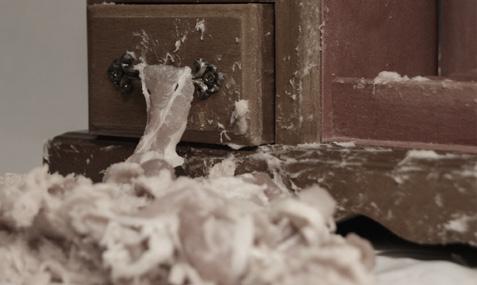


Breaking
https://media.ed.ac.uk/media/Cameron%20Boyd%20%2B%20Alastair%20Sinclair_Breaking%20Fast/1_7f46q1a0 51
Fast
Alastair Sinclair / Cameron Boyd

INFRASTRUCTURE REANIMATED
LEITH DOCKS, EDINBURGH, SCOTLAND
ALASTAIR SINCLAIR
This project attempts to reanimate Leith’s Victoria Swing Bridge. This was completed in 1874 and allowed goods from the docks to be transported by rail. However, as its surroundings changed, it became disused and was eventually blocked by the construction of a road bridge. In creating a house and studio for twin animators, an opportunity is found to relocate and adapt the processes of the nineteenth-century structure to its changed context.
The animators’ house is situated on a new swing bridge, to the north of the original, which also functions as a projector and viewing space for films. As the structure rotates it interacts with a constellation of buildings that operate in relation to it. The studio, located on the opposite dockside, reaches out from across the water to give access to the bridge. Between bridge and studio, a ‘dredging table’ can be lowered into the river to collect waste, which is then sorted by the animators and is either used in animation or to fuel the house by anaerobic digestion. The walkway screen receives projections from the bridge, as well as creating a public route to the bridge via the studio. This screen can be lowered, forming a platform for people to walk across. The tower screen can be used for large-scale screening events. It sits close to the original Victoria Swing Bridge and can block the road bridge as an act of revenge.
07


53




ProjectionHouseIterations(previous,right)
SitePlan(left)
LandscapeModel (topright)
ElementsofProjectionHouse:Frame,Counterweights,Accommodation,Circulation,Assembly
SINCLAIR | INFRASTRUCTURE REANIMATED 55
ALASTAIR












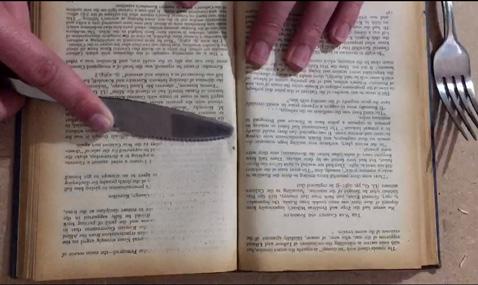



h ttps://media.ed.ac.uk/media/Lewis%20Brown%20%2B%20James%20Gillis_A%20Slow%20Descent%20Into%20 Madness/1_u0a2kzvd 57
A Slow Descent into Madness Lewis Brown / James Gillis



59

RIONNACH MAOIM
ISLE OF LEWIS, OUTER HEBRIDES, SCOTLAND
LEWIS BROWN
This project explores the power of language – strong style, single words – to shape our sense of place. It is a word hoard of the astonishing lexis for landscape that exists in relation to the rivers, hedgerows, lochs, bogs, fields and edge lands uneasily known as the Isle of Lewis. The remarkable referential exactitude of a glossary uncovered by locals in a Counter Desecration Phrasebook, and the poetry of its terms, are adopted and animated through an architecture that is born out of a language deeply embedded within the landscape.
Domestic typologies and vernacular architecture are replaced by a lexicon of architectural devices that allow the house for animators to occupy and take advantage of the wet bog landscape, enabling it to shift, slip and excavate the bog as it retreats. A mechanical landscape is created of winches, pulleys and counterweights mimicking the architectural language of the Moor, found within the Counter Desecration Phrasebook. An architectural language of impermanence, loose-fit structures and permeable enclosures compliment and contribute to the nature of the fluid landscape, whilst allowing birds to nest within the house. The project then, unfolds as a study of a landmass many see as having nothing in it – the peatlands of The Brindled Moor on Lewis. A site, like so many of the empty places in the Highlands and Islands, under threat of becoming unseen, unheard, mute – which is to say, inanimate – in the planning of its future.
08

61


GroundPlanofHouse,MechanicalTicketOfficeandMoineDhubh (previous,right)
SurveyDrawing:ExplodedisometricofEigconstructionsequenceandmaterialmakeup(topleft)
SurveyDrawing:ElevationisometricofGlassel,withhoiststoliftobjectsontoplatform(topright)
RelationalSectionofHouse,MechanicalTicketOfficeandMoineDhubh(bottom)


LEWIS BROWN | RIONNACH MAOIM 63
09
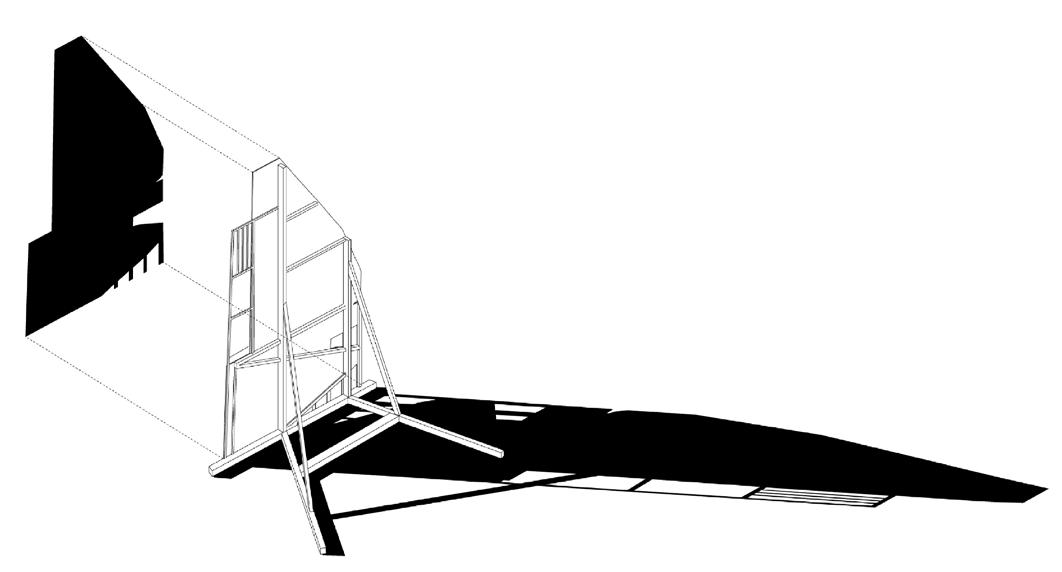
THE DOUBLE – VESSELS OF REDISCOVERED THINGS
HOLY ISLAND, NORTHUMBERLAND, ENGLAND
JAMES GILLIS
The house and film-theatre for the pair of stop-motion animators is located on the shoreline of Lindisfarne, an island with a landscape of flatness and extensive horizons. The project builds relations with this by engaging the network of vertical objects (navigational pyramids, etc.) that are scattered across the horizon, and by establishing an architecture that acts as a spiritlevel-like device of registration in the landscape, against which its subtle modulations can be read. Moreover, the project sets in play a sequence of doublings of spaces and objects found in the adjacent Lindisfarne castle, giving rise to a series of ‘vessels’ in which things are rediscovered anew. Drawing upon the birdcage that was used in the initial film, the project imagines the projection of an array of shadow-objects over the adjacent landscape, which find materialisation in diverse ways.
Overall, the project has emerged as a multi-layered and complex piece of work, defying generalisation and complete definition – much like the film it evolved from and the island within which it sits. It explores themes of animation not only in the architecture physically, through ‘animate pieces’, but also in its inhabitants (both human and animal), in the movement of the land and sea, and in the shifting and transformative powers of light. It seeks to harness these to create a space in which what was familiar can be constantly rediscovered anew.

65




Film-House,FieldofShadowObjects(previous,right)
ExplodedAxonometric(left)
ExplodedIsometric,PublicTheatreandProjectionHouse(topright)
SectionShowingScreeningCondition(right)
JAMES GILLIS
| THE DOUBLE
67




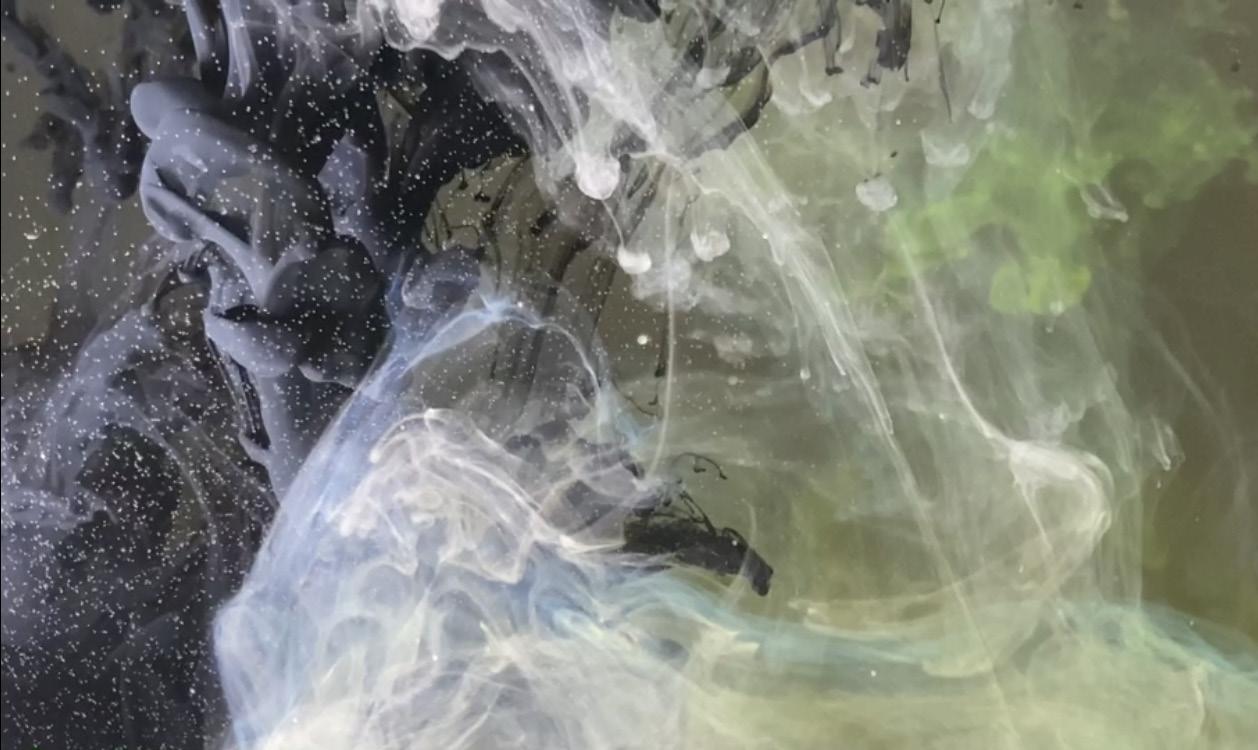












https://media.ed.ac.uk/media/Oliver%20Song%20%2B%20Alice%20Zhao_Liquidity/1_ikeipqzr
Liquidity Oliver Song / Alice Zhao
69

WORLD BRIXTON
– FUNCTIONAL DWELLING ANIMATED BY TWINS
BRIXTON, LONDON, ENGLAND
OLIVER SONG
The animated film project studied the injection of acrylic pigments into water, observing their interaction and dissolution. It is a slow process of one substance invading, intruding into, and assimilating the other. An interest in these ideas led to the selection of a complex site in Brixton, located at a junction where one elevated railway – travelling east-west – splits into two, while a third – on an even higher level – passes in a north-south direction. Every ten minutes, when a train goes by, sound and vibration invade the site. Surrounded by arcade markets and recreational centres, as well as street performers, the site is full of manufactured sounds.
Thus, the project is designed to embrace the vivid living scene of Brixton, to gather people around and create happiness while also having some protected, stable, and controlled spaces for the twins and visitors to find their inner peace and to take breath. The project is based around the pattern of arches and can be seen as an extension of the two split railways. Inheriting the local architecture, the project’s sheltered spaces are linked to arches which then lead towards the rest of the site. Multiple entrances allow people to enter the outer ring freely, while the ramped urban surface of the wedge-shaped centre of the project provides an event space and sitting area orientated toward the exterior cinema screen. Like a vast hangar door, this can be swung open to connect exterior and interior spaces.

10

71

PerspectiveViewoftheCentralCourtandCinema(previous,right)
SitePlan(left)
AnimatedSequence(topright)
PerspectiveViewoftheCentralCourtandTwins’Dwelling(bottomright)








OLIVER SONG | WORLD BRIXTON 73

WALLS, GARDENS AND WATER
BRIXTON, LONDON, ENGLAND
ALICE ZHAO
Although close to the present Brixton train station, the site appears very deserted and secretive now. Three criss-crossing railway lines enclose it, forming an acute triangle whose surroundings have diverse functions. There is the very large and busy Brixton Recreation Centre on the street, while on the south side is the famous Brixton market, with many vendors and small shops. The long history of the site has brought a particular artistic flavour to this place.
Combining the initial study of the previous film and drawing, I divided a raised surface of calm water into several blocks, according to the logic of movement on street level. The arrival of the trains brings vibration to the water, while its surface reflects the shadows of the sky and clouds, giving this cloistered space a vivid sense of mystery.
The project develops through nested, concentric walls, conferring privacy and a hidden complexity to be discovered. The external wall mediates the sound and movement of the trains, while the inner wall divides the space into two zones of private residence and public leisure. Between the external and the inner wall is a circulation route, which connects the station, residences and public filming area. The public and private flow lines are separated from each other and finally combined. Through different narrative methods, the whole building becomes a richly-patterned space through which people can move and take pleasure.
11



 ViewsoftheWaterCourtyardandCinema(right)
ViewsoftheWaterCourtyardandCinema(right)
75
ExplodedIsometricandScenariosofInhabitation(following)




ALICE ZHAO | WALLS, GARDENS AND WATER 77






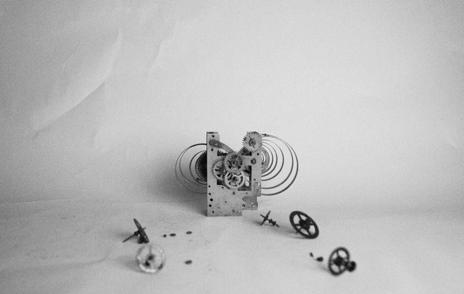








https://media.ed.ac.uk/media/Petros%20Tsifoutidis%20%2B%20Hongqiu%20Wang_Afterpieces/1_ie7713bz
Afterpieces Petros Tsifoutidis / Hongqiu Wang
79


81

ANIMATING MODIANO
THESSALONIKI, GREECE
PETROS TSIFOUTIDIS
The starting point for the proposal was the creation of a stop-motion animation titled ‘Afterpieces’, made in collaboration with Hongqiu Wang. The film is about animation through the dismantling of two obsolete technological objects with complex internal mechanisms, which were found in a vintage market in Thessaloniki. The film-making, motifs and themes of the animation draw influence from the Street of Crocodiles, by the Quay brothers. This influence is extended into the formulation of the proposal Animating Modiano, which is about the reconceptualization of the existing and abandoned Modiano Stoa Market as a place for the exchange of used technological goods.
Through a study of the urban fabric of central Thessaloniki, the unused Stoa (a linear covered walkway or portico) market building of the earlytwentieth century was identified as a site of intervention. The Modiano Stoa is a landmark of Thessaloniki, a longitudinal public space that is located adjacent to the central Aristotelous square. The presented proposal juxtaposes the new commercial function with the animators’ housing, a dismantling tower, and a performance / screening space, all of which are formed as elevated structures within the existing building. These overlook the technology market on the ground floor, from which materials for filmmaking are scavanged. Used technology such as old phones and other devices are brought in and taken out of the market through mechanical lifts. In the dismantling tower, whose function is a direct continuation of the animation process, devices not used in the market are taken apart in preparation for recycling.
12
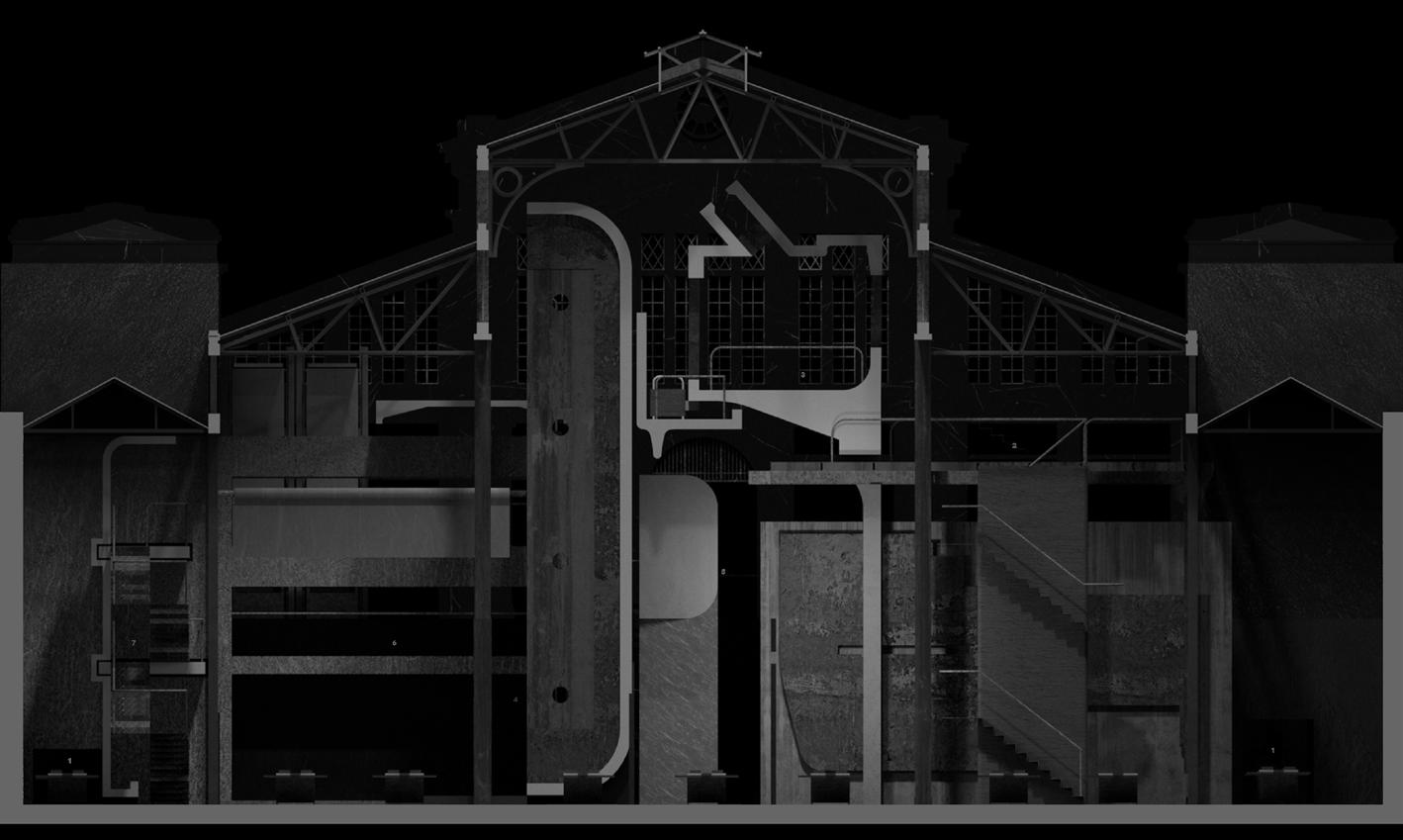

83


ShortSectionFacingNorth-East(previous,right)
HouseInterior:LandscapeofScreens(topleft)
MechanicalObjects:ContainerLift,HydraulicPressofTickets,ContainerSeller'sTable,ScaleSeatforBrothers(bottomleft) ExplodedIsometric(right)


85
PETROS TSIFOUTIDIS | ANIMATING MODIANO
RE-ANIMATING A FABRIC FACTORY
SHANGHAI, PRC
HONGQIU WANG

After studying the Quay Brother’s Street of Crocodiles, two objects were found – a 1950s Czechoslovakian radio and a clock from the 1930s. Although these were not working, they had complex internal mechanisms, one mechanical and the other electrical. The animation developed as a kind of choreography of the dismantling of these. The final scene – in which the shadows of removed components were captured by a camera through an opaque surface – became crucial for the subsequent design.
The project is based around a disused fabric factory in Shanghai, with the animators’ house and studio programme being re-envisioned as a film school with accommodation. In the initial film, the parts of the dismembered machines became mobile, losing their fixed relation to their originating mechanisms, and – as a consequence of this – they became abstract and generative of new conditions. These elements were then read – as a kind of debris that implicated space, climate, individuals, and substance – in order to produce a constellation of programmatic fragments, which became scattered around the existing building, dynamising it and the surrounding space.
13

87



FilmDrawing:Rivalry,Movement,Checkmate(previous,right)
DiagramofAnimateParts(left)
SecondFloorPlan(right)
RE-ANIMATING
89
HONGQIU WANG
|
A FABRIC FACTORY













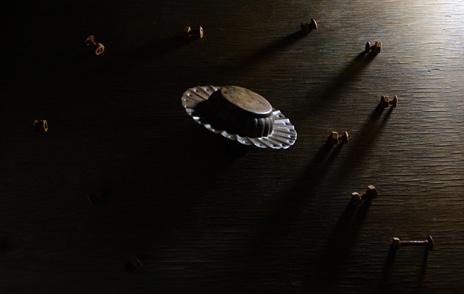

https://media.ed.ac.uk/media/Peitong%20Liu%20%2B%20Yifei%20Huang_Vision%20Dubbing/1_fxh5r67y
Dubbing Peitong Liu / Yifei Huang
91


93

DUBBING
XIBIANMEN STREETPARK, BEIJING, PRC
PEITONG LIU
The study began with a film project that reversed the traditional shootingdubbing production process, instead seeking to ‘dub’ existing sounds with visual objects. The sounds were recorded and arranged in sequence of scales, from that of a handle to that of the landscape. Different lighting environments were set up and ‘found objects’ of various materials were choreographed and filmed to make four scenes. These were then organised as a loop, meaning that the animation could start at any point and play endlessly.
The design is sited on a fragment of refurbished city wall, surrounded by elevated expressways, at the southwest corner of Beijing’s Second Ring. With its massive brick surface and sealed rammed-earth interior, the wall becomes animated through its interaction with a new parasitic architectural intervention. Inspired by the bohemianism of now-demolished artist villages that grew up on the edges of Beijing in the 1990s, this project proposes living and workshop areas with a hidden viewing space for two animator twins. Outwardly, with its huge screen and multiple functional public spaces on the top, the newly parasitised wall becomes something collaborative and touchable rather than separating and defending. Adapting to the constructional logic of the city wall, steel, timber, rammed earth, and translucent materials interact with it in various ways – sometimes screening it, sometimes excavating its interior and displacing the materials. Moveable architectural elements and animating furniture allows a transformation between different atmospheric and spatial qualities, in relation to changing lighting environments across shifting times and weathers and through days and seasons.
14




95


LayeredPlans(previous,right)
SitePhotographs:TheXibianmenRelicPark(previous,bottomright)
IsometricSection,InhabitedWall(topleft)
IsometricView,FaçadeMovement (right)
ArchaeologicalGarden,Detail (bottomright)


PEITONG LIU | DUBBING 97
15

NOMADIC PROJECTIONISTS
LAKE TAIHU, PRC
YIFEI HUANG
There was an occupation in China in last century that involved travelling to different villages to screen films for people. The role of this kind of ‘nomadic projectionist’ is remarkable in the cultural history of rural places in China, for it helped form the collective memory of the generations that lived through a period of intense change. Unlike this restless and surging time, Lake Taihu – in the Yangtse Delta in China – is always calm. During these years, it witnessed the vicissitudes of its surroundings and wraps the stories in its mist on the flat ripples. The design of a floating architecture for the twin animators travelling around the Lake Taihu is a rediscovery of cultural characteristics that fade with traditions, and a salute to the rural society that is the inconspicuous foundation of China.
The architecture reflects the condition of animate matter on several levels. Firstly, the mobility and flexible morphology of the building, and the interior space with dynamic views, animate this architecture visually. Secondly, variable weather and different occasions of events give rise to animating atmospheres which enliven this architecture. And thirdly, what is animate becomes recognised as such through its contrast to what is static. The relatively static way of living in the area of Taihu, through the productions of the animators based on people's lively stories, gradually accumulates to give witness to the animating life around the lake, and so forms an archive of passing time. Time is what animates materials, just as it animates the static frames of a film.




99






ExplodedIsometric/CrossandLongSection(previous,right)
PerspectiveViewoftheLivingRoomandGarden(previous,bottomright)
Viewsofprojections(topandmiddleleft)
InteriorFloorPlan (bottomleft)
ViewsBetweenStudioSpaceandGarden (topandmiddleright)
LongSection (bottomright)
YIFEI HUANG | NOMADIC PROJECTIONIST
101








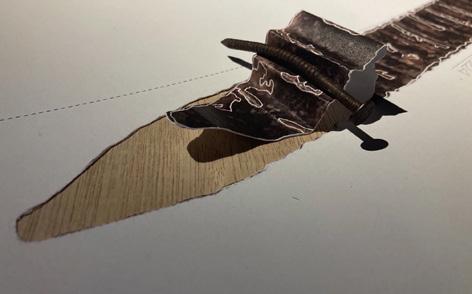





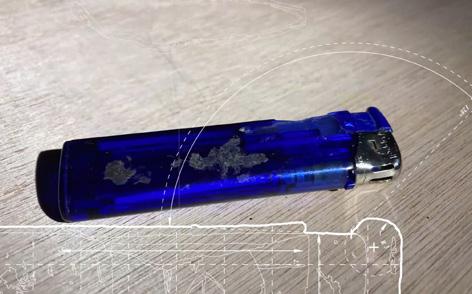
http s://media.ed.ac.uk/media/Samuel%20Pickering%20%2B%20Sara%20Sako%20-%20Choreography%20of%20 Found%20Objects/1_t8b5tsp4 103
A
Choreography of Found Objects Sara Sako / Samuel Pickering



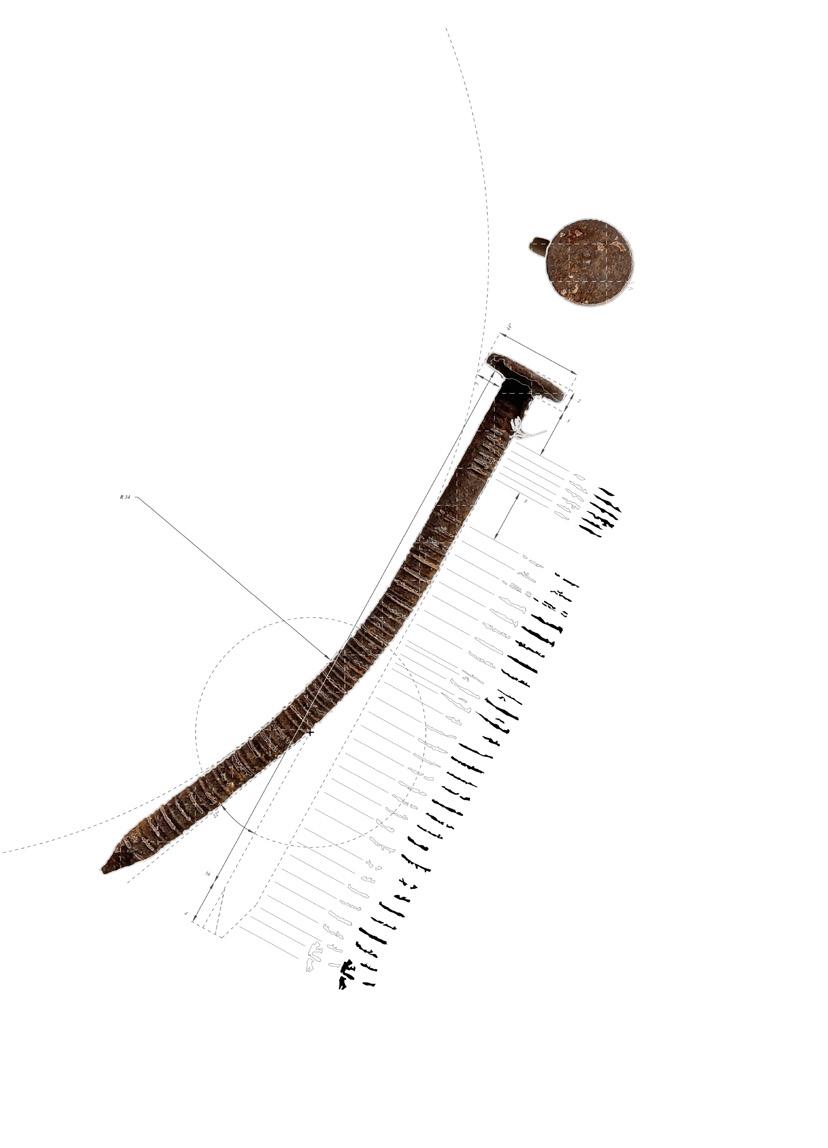







A CHOREOGRAPHY OF FOUND OBJECTS SurveysofFoundObjects 105



FoundObjectsonSurveyDrawing(left)
SARA SAKO | SAMUEL PICKERING | A CHOREOGRAPHY OF FOUND OBJECTS
107
SpatialScript(right)

COCKENZIE
GENERATING STATION
COCKENZIE, EAST LOTHIAN, SCOTLAND
SAMUEL PICKERING
The project began by developing a map-based process for finding diverse objects, intensely studying them by drawing, and then re-animating them through stop-motion film technique. Two ‘spatial score’ drawings were produced through this process, the second of which became key for the proposal for a new Cockenzie ‘generating station’ on the site of the former power station, which was demolished in 2015. Taking the ‘spatial score’ drawing – which was created at the culmination of the twins’ previous film – as a starting point, a series of programmes relating to the creation and screening of new films, as well as to the twins’ domestic needs, was developed.
The vast cleared site becomes a new landscape-scale ‘animating table’ filmed by drone-cameras, with the programme concentrated a little distance away, at the end of the existing service jetty, to gain a clearer perspective on the whole site. The design process made opportunistic use of the ‘spatial score drawing’, inverting strips to be used as elevational nets for the required programme. Cues are taken from the lines and marks to guide cuts and folds – a continuation of the twins’ film-making process, one of improvisation and chance encounters between found material, in which matter is always allowed to take the lead. The resulting building is a layered tower of differential translucencies, displaced from the land’s edge. Between its programmed floors are open zones of free space, and to one side is a large rotatable screen on which films can be shown and that acts as a photovoltaic generator.
16

109


ViewfromServiceJetty(previous,right)
ViewAcrossClearedSite(top)
AxonometricofVeilAperturesandElevation(left)
SectionsandPlan(right)





SAMUEL PICKERING | COCKENZIE GENERATING STATION 111
17
BREEDING DUST
LANZAROTE, ISLAS CANARIAS
SARA SAKO
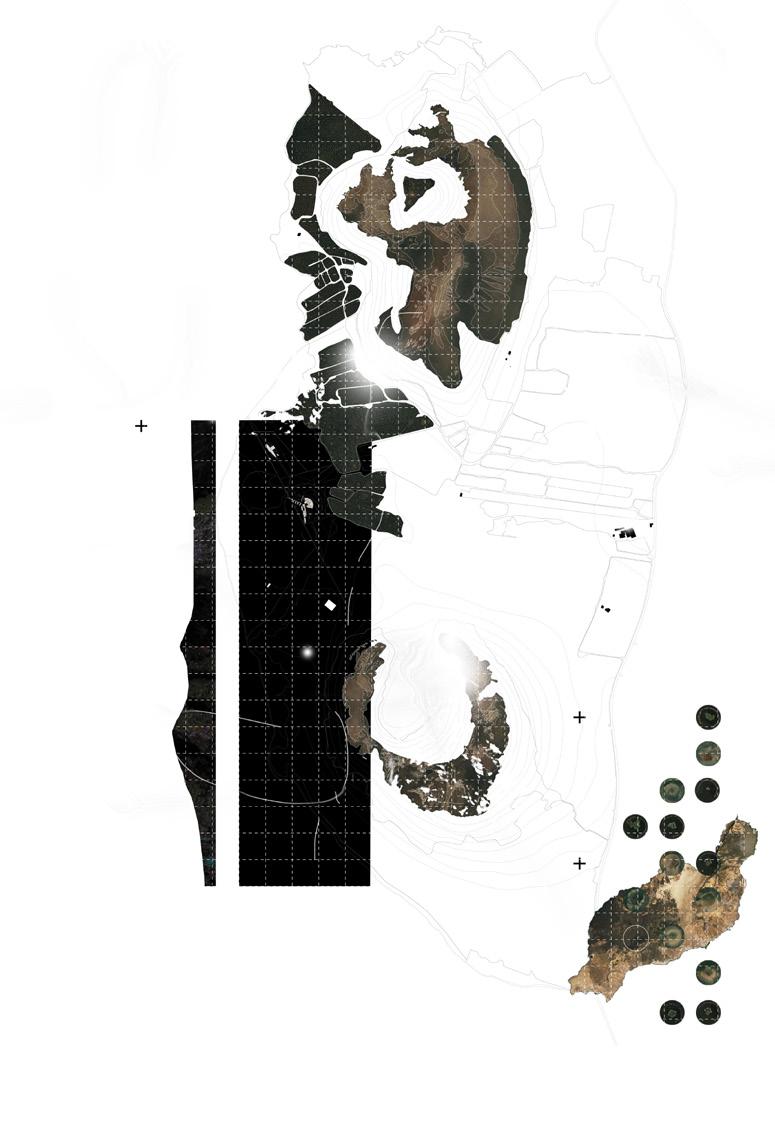
The project, a house for animator twins, derived from the development of an experimental animation film and a notational ‘spatial script’ abstracted from the final scene. This drawing was used as a starting point for the project and treated as a site through which to explore the potentials of a constructed topography. From there, an architectural strategy was extracted from the drawing, shaping the building and landscape conditions. A process of intensification through folding was explored in all aspects of the project, from landscape elements to programmatic composition. Meanwhile, the cartographical approach that had been established in initial surveys of found objects was extended in the design process. As with the film, the design emerged out of a process of collecting and drawing, with accumulating sequential explorations leading to a project of folds and layers.
Sited on the volcanic island of Lanzarote, sand, dust and wind infiltrates and is animated by the building through a system of fins, screens and channels. Reading on the cultural history of dust led to Man Ray’s Dust Breeding – his enigmatic photograph of Marcel Duchamp's The Large Glass – becoming an important reference. This was a starting point for specifying the project further, by allowing the animators to become ‘dust breeders’ –animators of dust. This in turn informed the architectural infrastructures required for their activities and for the screening of the films they make. As an architecture that topographically channels wind, the project constructs a relation with the remarkable historical vinicultural landscapes of Lanzarote.

113

LaGeriaSitePlan(previous,right)
TaxonomyofArchitecturalElements(left)
SequenceofSpaces,Animator’sRoute(right)



SARA SAKO | BREEDING DUST 115















https://media.ed.ac.uk/media/Joanna%20Hobbs_A%20Coat%20Between%20Bothies/1_bha5ca58
A Coat Between Bothies Joanna Hobbs
117

THE LAST SNOW – AN ARCHITECTURE OF TRACES CAIRNGORMS, SCOTLAND
JOANNA HOBBS
Through a methodology of accumulation and a gathering of information across thousands of years, ‘The Last Snow’ spans between the time taken for frost to form, to the slow geological formation of glacial till deposits. Set in the Cairngorms, the project first develops a coat that gathers traces of movement between bothies, and secondly a refuge, repair workshop, and home for two reindeer herders, speculating what may appear on the site of the current ski station beyond the last predicted snowfall, which is forecast to take place in 2080. The project explores an accumulation and intensification of layers animated by the weather, as well as the markings that the weather, animals and people leave on an environment. As they pass through the site, activating different spaces, the proposal encourages and embraces the ephemeral qualities of these events, amplifying, accelerating or slowing different aspects to diversify the qualities and kinds of animation that take place. The proposal itself is seen not only as a site for the concentration of animation, but also as a space that is itself animated through time. Much like the nomadic architectures existing in similar extreme environments that the project references, the proposal is seen as a shifting structure within the timeline of the site in the Cairngorms, which inevitably continues to transform over time.

18
PROPOSAL AXONOMETRIC proposed building following the end of use of the sheiling midstation


119


ViewintoRefugeLivingandSleeping(previous,topright)
Fragments of Proposed and Existing Contextual Histories and Textures,Plan(previous,right)
PlanCollage (middle)
ViewlookingtowardstheStablesandWorkshops
March2085,ApproachingtheRefugeFromCairngormSummit



JOANNA HOBBS | THE LAST SNOW 121
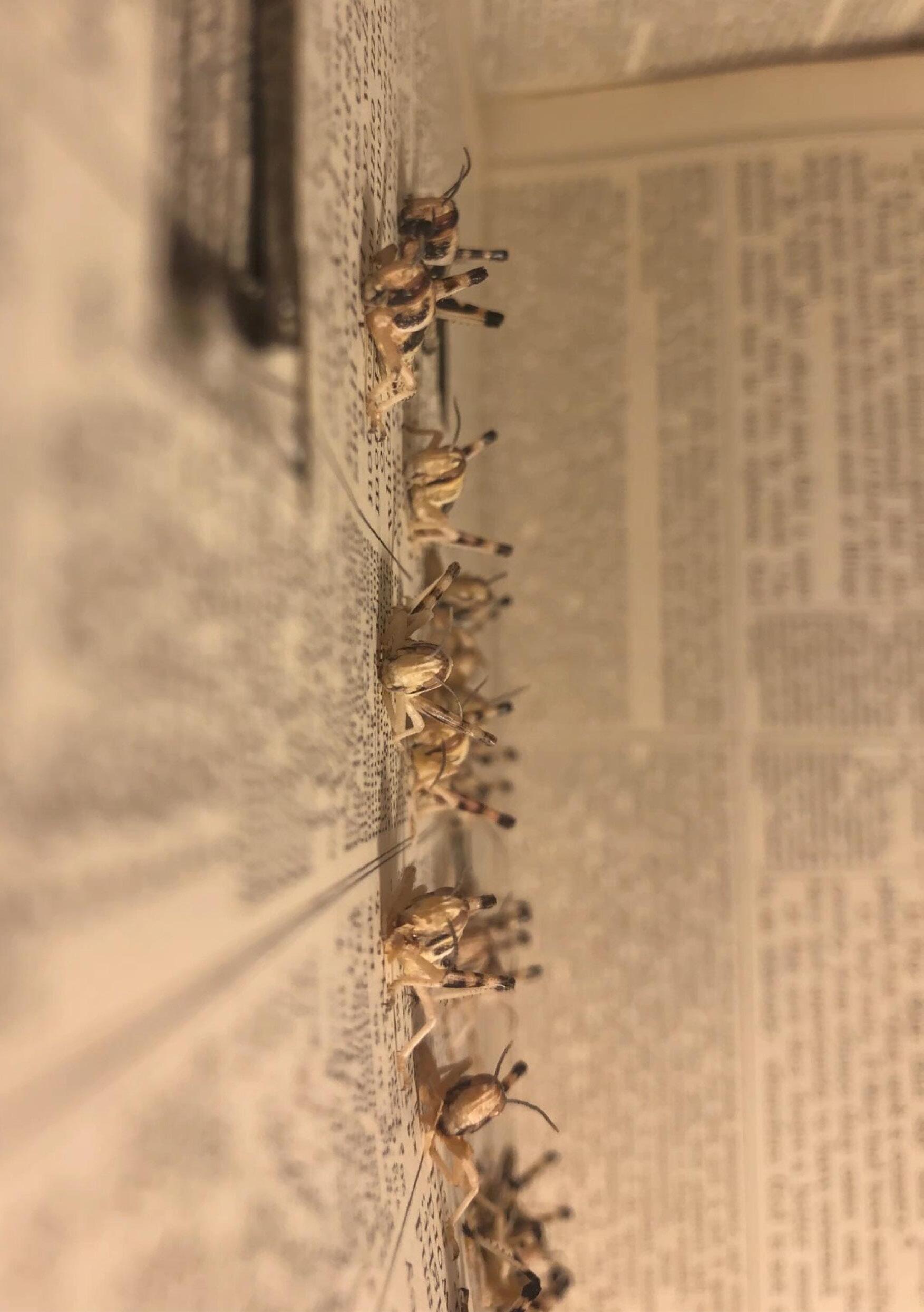
















https://media.ed.ac.uk/media/Oliver%20Monteith_The%20Second%20Book%20of%20Genesis/1_mkjm3sl9
The Second Book of Genesis Oliver Monteith
123

ARMATURES OF ANIMATION
GLADSTONE’S LAND, EDINBURGH, SCOTLAND
OLIVER MONTEITH
The project starts with Gladstone’s Land, a high-tenement house, located in the Old Town of Edinburgh, with parts dating from the sixteenth century. Throughout its history, the building has existed in a state of constant animation, being added to, subtracted from, divided, and reconfigured in response to changing laws, economics and culture. In the twentieth century, a ‘conservation’ of Gladstone’s Land took place, which sought to preserve it as a seventeenth-century house – despite its many alterations since that time – and effectively froze it as a historical fantasy.
Armatures of Animation seeks to return Gladstone's Land to its tradition of animation, and attempts to develop an architecture that works with this history in a way that is both sensitive and productive to the animators’ practice. The project substitutes the historical fiction that drove the National Trust's intervention in the building with the narrative of my stop-motion film, which then acts as the source for the reanimation or ‘re-genesis’ of the building, establishing a field of salvaged fragments of the old structure (imagining its scheduled demolition had taken place). An architecture of armatures is then developed to hold these pieces, which are exhibited in the house but also become part of its architecture. This architectural logic is explored at all scales within the building and twinned with its inverse in the underground space, where an architecture of excavation is developed.
19

125








DigitalMaquette(previous,right)
DigitalMaquettes:TicketMachine(left)
DigitalMaquettes:EastWing(right)
SectionsLookingEast/North/South(bottom)

|
OLIVER MONTEITH
ANIMATION
ARMATURES OF
127










https://media.ed.ac.uk/media/Zeyu%20Liu_Trance/1_natpd5zf



 Trance Zeyu Liu
Trance Zeyu Liu
129

ANOTHER ARTIFICIAL ISLAND
THOUSAND ISLAND LAKE, PRC
ZEYU LIU
Sixty years ago, China had an inadequate power supply. At that time, hydroelectric power stations were built to provide more electricity and, as a result of damming, some cities were submerged under water. One such site was Lion City, which is now located in what has become known as Thousand Island Lake (due to the original mountains having been transformed into many small islands). In this project, two close childhood playmates choose to return to the Lion City and try to relate modern life to the underwater world. They will control three completely different floating units – a studio unit, a screening unit and a garden unit. These three units can be combined in various ways to meet different functional needs. At the same time, the curves of their roofs can be integrated into the environment, creating an alternative kind of artificial island (both void and solid). They will live in a form of semi-subsistence on this artificial island, while extracting and re-creating images from the underwater world using modern technology without damage. At the same time, the artificial island can accommodate a small number of visitors to help them better understand and interpret this history.
This is the second type of artificially created island on the site. Whereas the first converted the flooded landscape into a tourist resource, this project aims to touch on the cities and stories that lie beneath the water and integrate them with today's artistic creations to form a different kind of cultural resource.
20



131


PerspectiveViewsofUnitConnections(previous,right)
SectionalPerspective:theUnderwaterCity(topleft)
IsometricView:UnitsareCombinedtoFormaCompleteAnimationStudio(bottomleft)
InteriorPlansoftheProjectionUnit(topright)
PerspectiveViewAcrosstheWater(bottomright)




ZEYU LIU | ANOTHER ARTIFICIAL ISLAND 133











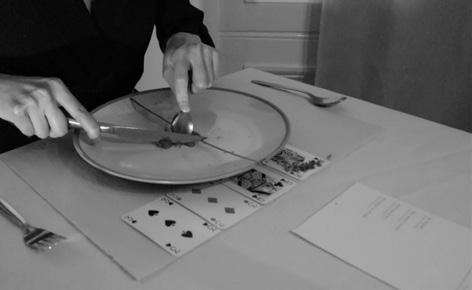



https://media.ed.ac.uk/media/Evelyn%20Sung_The%20Death%20and%20Dreams%20of%20Edible%20Art/1_lxvdstec
The Death and Dreams of Edible Art Evelyn Sung
135



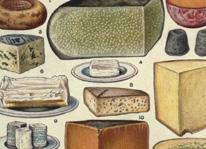





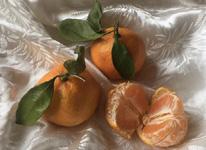





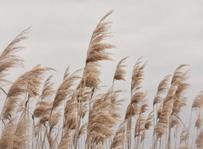









menu banquet 21:30pm to begin: the main event: followed by: perhaps a drink: rules fresh Just collation of everyday basic ingredients to propel your food fusion sweet Sugar, spice, and all things nice. Cook up storm with these essential key ingredients peculiar Do we ever really know what we are consuming? Time, money, energy, social media... edible foods are not the only thing we consume. How much of what we intake is healthy for us? How much is natural? Think of these as concepts, not to be consumed, however to simply be sensory experiences. condiment Herbs and spicesssssssss baby This is no ordinary recipe book. Inspired by Filippo Tommaso Marinetti’s 1932 Futurist Cookbook, we aim to abolish all foods; in the belief that anything of any fresh Just collation of everyday basic ingredients to propel your Salmon-ella ;serves two The King of fish... Served as Sashimi Ingredients: 300g fresh sashimi-grade salmon Method: problem with eating raw fish is not knowing how has been handled, seek out your ingredientes from trustworthy local fishmongers to ensure the best A Served Cooked Ingredients: 300g fresh salmon Method: enhance its natural flavouring. in pan over tinfoil for crispy texture tinfoil. Grill for 15-18 minutes O would -live to ;serves two The best things come in small jars 02 Olives come in all sizes, colours and varities. Great on bread, crakers, pastas and pizzas, this is also great in mediterranian dishes Salmon-ella Put the rad in radish ;serves two 07 Lovely in salads, slaw, pickled, radish is refreshing and crispy, adding crunchy texture to any dish Say Cheese ;serves two 08 soft cow’s milk cheese from the region of Seine-et-Mame in France. Served nicely with grapes, white wine, and bread Mozzerella Manchego Originating from the La Mancha region in Spain, this cheese is firm and aged Feta A brined curd cheese, often white in colour with crumbly texture. Made from sheep’s Parmesan - Originating from Cyprus, this mixture of sheep and goats cheese softens in the 16 Eggs 09 Poached minutes and scoop out when firm Sunny Side Up Scrambled Crack open an egg into bowl. Add pinch of salt, pepper and splash of milk. In large pan, add oil and pour in the mixture. Do not overcook and remove from the pan once the egg forms. Boiled Crack open an egg into bowl. Add pinch of salt, pepper and splash of milk. In large pan, add Frittata Cook eggs and fillings in skillet until just set. Transfer to 350 oven and bake until set for 8-10 Lemon and Lime ;serves two 10 Great in spicy curries and sweet drinks, limes offer great versatility and balance across all dishes Food Bee-throthed to you ;serves two Quickly becoming superfruit, beetroot is known to have healthy and nutritional benefits, such as improving athletic performance, reducing blood pressure and increasing blood flow J Ingredients: Butter (30g) Thyme Plain Flour (200g) Method: Place flour, butter, thyme and salt in blender and whiz until the mixture becomes crumbly. Add 60ml chilled water until the mixture becomes dough like. Wrap in clingfilm and chill for 30 minutes Preheat oven to 180 °C. Bake for 10 minutes. Spread beetroot mixture with diced feta over tart and sprinkle with thyme. Bake in the oven for 28 Pear-fect ;serves two Peaaaaaaaaaaaaaaar-fect 03 Crystallised Pear Ingredients: 300g white granulated sugar Method: minutes until the pears have become translucent. Dehydrate the pears in an oven at 170F/77 degrees celcius flipping every so often until the pears are 29 Just Grape ;serves two When life gives you grapes, make wine! 04 Grape Jam Ingredients: 1.7 kg Seedless Grapes Place grapes, sugar, and lemon juice in preserving pan, on low heat, dissolve the sugar slowly, all the sugar has dissolved. Take the mixture into blender and blend the juices until even. Place pan on high heat and take the mixture back into the pan for 25 minutes. 30 Tangy -dream ;serves two Once upon tangy dream 05 Toss it in salads, spread it on fruit cakes, squeeze it into juice 31 Bananas in Pyjamas ;serves two Go bananas! 06 Banana Fritters Ingredients: vegetable oil for frying honey (to serve) Method: the milk. Mix well until smooth batter forms. Gradually beat in the rest of the milk Heat some vegetable oil in large saucepan. Sunshine Strawberries ;serves two You’re the straw to my berry 07 Strawberry Tart Ingredients: large egg 200g plain flour Method: 30 minutes. Once chilled, roll out pastry and line round tart tin leaving an overhang over the edges. Chill for another 30 minutes in the fridge in the meantime, whisk together the egg yolks and sugar until pale. Stir in the cornflour until combined. Pour hot cream over the egg whisk, tirring continuously then pour the mix into pan. Stir over medium heat for 5-8 minutes until thickened then leave to cool 50g butter softened 1/2 tablespoon cornflour 38 Dragonfruit ;serves two Not sure why this is called dragonfruit? K Smoothie Bowl Ingredients: dragonfruit 1/2 cup frozen raspberries fresh fruit hemp seeds Method: Serve in bowl topped with toppings of your choice Cool as a cucumber ;serves two Instantly refreshing, incredibly versatile. We beleive this is an essential ingredient. Joker Cucumber Noodles (Carb free!) Ingredients: tablespoons butter *special blade slicer Method: cold icy water. Drain the cucumbers Melt butter in pan and toss in cucumbers, salt, pepper, and lemon zest coating the pan until peculiar 42 Nails and Screws ;serves two Disclaimer*** only taste, do not eat, chew, or spit! A Sometimes you just need to nail it in *Not to be eaten!!! 48 fresh laundry ;serves two 07 Theres nothing better than the smell of fresh laundry nature ;serves two to tickle your senses 08 Smell it, feel the soft grass running through your fingers. But don’t eat it. Nuts and Bolts ;serves two Secure the food into place 09 Not the nuts you are thinking of. These will help to secure your food into place for a the most essential etiquette experience. *Not to be eaten!!! wishful thinking ;serves two With a wave of my magic wand J What is wishful thinking? Well if you ask me its a spoonful of anything. Yes thats right. Absolutely anything at all. 60 Sea Salt ;serves two Just pinch of salt... 05 Need we explain? Sprinkle on everything and anything! Sea Salt Pepper corn ;serves two and a twist of pepper 06 Need we explain? Sprinkle on anything and anything! 62 Ginger ;serves two Ginger a flowering plant originating from south-east asia. It is one of the healthiest spices with medicinal properties, aiding digestion, reducing nausea and fighting flu In Beverage Ginger Tea slice of lemon for acidity. Ginger Juice daily) In Food 07 Ginger Flour power ;serves two It comes in all sizes, shapes and colours. All purpose? Yes please. 08 Pasta? Done. Pizza? Sure thing. A birthday cake... no problem! Hotel? Trivago! 64 Minty- Fresh ;serves two Its absolutely mint! 09 Throw it into a curry, spice up the salad, freshen up the drink. Its absolutely mint. You can smell it from mile away. {+} {+} {+} {+} {+} {+} {+} time ;serves two What is eating you away today? 10 Consume time and tell me how it tastes. Savour its flavour Ingredients: Pinch Bunch cloves Method: Dice Creme: tablespoon vanilla extract egg yolks 60g caster sugar Grate Lets microplastics time way then At will




























Mush room for two ;serves two Mush room for dessert? 03 Creamy soup Ingredients: 200g sliced fresh mushrooms chopped onion Mix in flour, salt, pepper, and stock. Bring to boil and stir until thickened. On low heat, stir in cream and simmer for 15 minutes, stirring occasionally. Salmon-ella ;serves two Served as Sashimi Ingredients: 300g fresh sashimi-grade salmon Method: has been handled, seek out your ingredientes from trustworthy local fishmongers to ensure the best hygiene. A Served Cooked Ingredients: 300g fresh salmon Method: enhance its natural flavouring. Teriyaki: see p.56 Oui Oui ;serves two Crusty loaf 04 Fresh Bread Ingredients: 3tbsp olive oil Method: Combine the flour and salt and yeast, mix together in large bowl Create deep well in the middle of the bowl and add the olive oil and water, mix well and Place into well oiled bowl and cover with cling film. Leave to rise for one hour under warm towel until doubled in size. Once risen, punch down and leave to rise for another hour Sardine ;serves two Fish are friends... not food! 05 Serve on anything! Bread, pasta, rice... it will add a salty and crispy touch Tomato ;serves two Above all we beleive necessary: Tomatoes are the long lost lovers of pasta Q Bolognese Ingredients: of salt and pepper of Basil, oregano leaves cloves of garlic Method: the onions and garlic. On medium heat, stir fry the until browned. Death to Spaghetti ;serves two Above all we beleive necessary: a) The abolition of pastasciutta, an absurd Italian gastronomic religion (p.34 The From Packet Ingredients: Place kettle on the boil with rougly one litre of Place 200g of spaghetti (serves two) into the pan and spread across the brim. Add pinch of salt to 06 From Fresh Ingredients: 1/2 teaspoon salt Method: Create deep well in the middle of the bowl and add the eggs, whisk well and combine using spoon Allow the pasta dough to rest for 30 minutes If you like it you should put Herring on it ;serves two Salty and sweet K Matjes served cold; raw herring soaked in preserving liquid, such as mild vinegar pickle Smoked Pickled brined in vinegar, salt, sugar, peppercorn and onion solution *Best served alone, or with rye bread, potatoes, sour cream, eggs sweet Sugar, spice, and all things nice. Cook up storm with these essential key ingredients 26 Whipped Cream ;serves two A Simple and easy to enjoy, whipped cream is a versitile ingredient that can be served on cakes, with fresh fruit, in pies, trifles, drink and so much more! Ingredients: 300ml heavy whipping cream tablespoon sugar or honey Method: To jel or jell-o ;serves two 2 With Agar Ingredients: 15g Agar powder tspoon white sugar Method: bowl Boil 250ml of water Reduce heat once combined, the mixture should begin to stiffen. Enjoy! From Packet Ingredients: cup hot water (250mL) cup cold water (250mL) Method: Once combined, add 250ml of cold water into the add fruit! Cocoa ;serves two When life gives you cocoa, make chocolate! 08 Grate it, sprinkle it, melt it! Or simply just eat it. Who Clouds ;serves two A hug of thunder 09 Cotton Candy Ingredients: 240ml water Method: Heat to 160 °C and pour liquid into shallow heatproof container Knead the dough for roughly 8 minutes or until the dough is smooth and elastic back and forth so that thin strands line the paper. Repeat until you have nest of spun sugar. 35 Clouds As sweet as honey ;serves two 10 Honey and Lemon Tea Ingredients: Method: is perfect for sore throat. 36 Pomengranate ;serves two J Sprinkle over salads and breads for a tangy, fresh taste An Apple a day ;serves two Apple Pie Ingredients: White Sugar (65g) Brown Sugar (65g) tablespoon all purpose flour teaspoon cinnamon tablespoon butter large egg Method: Line pie plate with pastry, trimming the edges where necessary. Fill with the apple mixtureand spread the butter evenly. Place the remaining crust over the top of the pie and seal the edges. Place in pre-heated oven at 190 °C for 20-25 minutes or until brown and bubbly. Q Plastic Bag ;serves two Above all we beleive necessary: a) or becoming entangled in them and over time, these break down into small particles. How much microplastic are we unknowingly consuming in our seafood? 02 From your kitchen cupboard Lets talk microplastics. 5mm or smaller in size, microplastics are plastic particles that break down over time and erosion. Often found in the sea, they make their way into the ecosystem, consumed by small fish, which are then consumed by larger fish. That salmon you’re eating? some point has ingested a serving of waste plastic that will eventually make its way back to your plate. bubble ;serves two sit down with a glass of bubbly 03 Bubblegum Ingredients: Method: spoon until dough begins to form Knead the dough for roughly minutes or until the dough is smooth and elasticling pin, flatten the dough and cut into equal strips bubble Plastic Bottle ;serves two wat-er you thinking? 04 Your water comes from it, your drinks take form in it... why not serve it? 46 Sand ;serves two 05 *Eaten at your own discretion!!! Simply savour the texture, rubbing it between your fingers From the sea Do you ever taste the grittiness of sand in fresh seafood? Does it take you back to a special time in the summer by the seafront? Close your eyes and just imagine... Dollars ;serves two Just take all my money 06 From your pocket Cinnamon ;serves two Great in drinks and food, this spicy, nutty condiment goes with a A Cinnamon Bun Ingredients: 60g unsalted butter 400ml bread flour 3/4 teaspoon salt Method: Add warm milk in big bowl, ensuring it is not too hot or this will kill the yeast. Sprinkle yeast. Once dissolved, add egg, sugar, butter and mix until combined. Next stir in flour and salt until dough begins to form. Once doubled in size, roll out the dough into a large rectangle. Mix together the cinnamon and brown sugar and sprinkle over buttered dough. Roll up the dough and cut into equally measured Cinnamon Lavendar ;serves two 02 Lavendar is widely known to have healing properties and even help with muscle relaxation for deeper sleep 58 Soy Sauce ;serves two 03 Great mixed with: Dark Soy Sauce To make teriyaki add one tablespoon of honey or brown sugar add two tbspoon water add garlic Use for: flavour in rice dishes Soy Sauce Mixed Herbs ;serves two 04 Basil Oregano Fresh, pungent herb used in beef, chicken and lamb recipes. Also great in accompanying pasta, pizThymeats, as well as bread recipes Rosemary Parsley condiment Herbs and spicesssssssss baby Tumeric ;serves two Known to have a vast range of health properties, tumeric is natural anti-inflammatory substance with anti-oxidant properties. 10 In Food Perfect in curries, this golden yellow spice originates from India and grows in the forests of India In Beverage Tumeric shot Juice from 1/2 lemon tablespoon honey 66 Onion ;serves two Whats that smell? Ah of course its onion caramelizing J Brown or Red? French Onion Soup brown onions, peeled and chopped tablespoons butter teaspoon sugar Caramalize onion in large pain on medium heat until softened. Add butter and cook stiring often thirty minutes Serve with crusty bread and gruyere cheese. Red Onion Onion Garlic ;serves two Above all we beleive necessary: Garlic is great in EVERYTHING. Q Garlic Bread Ingredients: garlic bulbs Fresh bread (check p. 11) handful mixed herbs Chop up the garlic into fine pieces. Add oil into pan and saute the garlic until browned. Pre-heat the oven to 180 °C and grill for 10 minutes until crispy and brown 68 ;serves two You butter believe this is good K Perfect in savoury, perfect in sweet. Butter me up! ButterButter Seaweed ;serves two From Dried Highly nutritious in value, “nori” (seaweed) is a dried sea vegetable in the form of a “sheet” often used in japanese dishes to add salty and crispy texture. It is often found served in sushi rolls and sprinkled on Japanese rice and noodle dishes Joker {+} {+} {+} {+} {+} {+} {+} 137
Private:
TWIN RESIDENCES:
Area: = 102m 2
WATER HARVESTING:
Area: 75m 2

THE DEATH AND DREAMS OF EDIBLE ART BOIS DE VINCENNES, PARIS
EVELYN SUNG
GREEN GARDENS/COURTYARDS:
Area: 75m 2
COMMUNAL SPACE:
Area: 43m 2
Semi Public:
KITCHEN:
Area: 100m 2
A RESTAURANT FOR PARIS
Set on an abandoned airfield in Paris, south of the Bois de Vincennes, a strange restaurant is managed by two twin chefs. Offering an unconventional approach to dining – a banquet for a feast or a hot-air balloon for skydining – visitors experience food using all their senses. Extremes and adjacencies are exaggerated and amplified by the relationship between above and below and kitchen to table, using (un)traditional means of catering, such as entire kitchens that operate as dumb waiters, drones that deliver food to balloon diners, mechanically-operated systems, and pop-up food preparation devices. Guests are prompted to put things in motion and animate the inanimate. They observe a series of rituals that intensify their dining experience – changes of clothing, blindfolds, ablutions, etc.
DRYING SPACE:
Area: 50m 2
Above the restaurant and kitchen are dwellings for the two Chefs, one Head and one Sous. An animate kitchen runs between the two, with fridges that open onto new rooms and ladders that ascend into derelict spaces.
STAFF ROOM:
Area: 90m 2
The scale of relationships in the project run from that of mundane artefacts of everyday use, such as a fork or an apron hung to dry, to the expanse of the airfield and the height of the sky. The project sits within its landscape like a fork on a tablecloth, set in its usual manner until the site becomes ‘activated’ during the day, at which point the inanimate is displaced from its normal condition or setting.
BOTTLING ROOM:
Area: 50m 2
21
programme
STORAGE:




01 139





LocationPlan(previous,right)
ReworkingtheTablecloths(previous,bottomright)
GroundPlanandSection (left)
ViewofExternalScreensandSkins(topmiddle)
ViewofaBanquetTable,aManifesto(topright)
AxonometricandExpansions(bottomright)
EVELYN SUNG | THE DEATH AND DREAMS OF EDIBLE ART
141
BIBLIOGRAPHY
Michael Atkinson, ‘The Night Countries of the Brothers Quay’, Film Comment , 30(5) (September–October, 1994): 36–44.
Suzanne Buchan, ‘The Quay Brothers: Choreographed Chiascuro, Enigmatic and Sublime’, FilmQuarterly 51(3) (Spring, 1998): 2–15
Suzanne Buchan, TheQuayBrothers:IntoaMetaphysicalPlayroom (Minneapolis: University of Minnesota Press, 2011).
Susan Delson, ed., QuayBrothers:OnDecipheringthePharmacist’sPrescriptionforLip-ReadingDummies (New York: MoMA, 2012). (Exhibition website: https://www.moma.org/calendar/exhibitions/1223 )
Mark Morris and Neil Spiller, ‘The Shadowy Thickening of Space and Time with Chance: An Interview with the Quay Brothers’, ArchitecturalDesign 88(2) (March / April, 2018): 72–77
Basia Nikiforova, ‘Philiosophy of Matter Manipulation in Brothers Quay’s Metaphorical Animation World’, CreativityStudies 8(1) (2015): 3–11.
Bruno Schulz, The Street of Crocodiles and Other Stories (London: Penguin Classics, 2008).
Rebecca A Sheehan, ‘The Disembodied Wound of The Piano Tuner of Earthquakes: The Quay Brothers’ “Homage to Chris Marker”’, Discourse 34(2–3) (Spring/Fall 2012): 209–229.
Damon Smith, ‘“They’re Panicking, Look at Them!” The Brothers Quay’, in Gary Morris, ed., Action! Interviews withDirectorsfromClassicHollywoodtoContemporaryIran (Anthem Press, 2009): 207–224.
The Quay Brothers, ‘Ten Unproduced Scenarios’, Conjunctions 46: Selected Subversions – Essays on the World at Large (2006): 347–397.
Ewan Wilson, ‘‘Diagrams of Motion’:Stop-Motion Animation as a Form of Kinetic Sculpture in the Short Films of Jan Švankmajer and the Brothers Quay’, in Animation:AnInterdisciplinaryJournal, 13(2) (2018): 148–161.
Films
Brothers Quay, Street of Crocodiles (1986), in TheQuayBrothers:TheShortFilms1979–2003 (BFI, 2006) (DVD). Available online: http://www.totalshortfilms.com/ver/pelicula/251 (free, but low-resolution) and at the British Film Institute https://player.bfi.org.uk/rentals/film/watch-street-of-crocodiles-1986-online
Interviews
‘The Brothers Quay: Walker Dialogue with Bruce Jenkins’, Walker Art Centre: https://www.youtube.com/ watch?v=B6ZVVtz1WVk
‘The Quay Brothers Go to the Movies, with Edwin Carels’, Eye Filmmuseum (2013): https://www.youtube.com/ watch?v=ZfYVpTE9zyw
‘Frameworks – Quay Brothers’, International Film Festival Rotterdam (2020): https://www.youtube.com/ watch?v=1maXghvrL00
‘The Quay Brothers Interview’ (MOMA retrospective, 2012): https://www.youtube.com/watch?v=xuW-RchDq2Q
‘Shadows and Whispers – Larry Sider on Working with the Quay Brothers’, Eye Filmmuseum (2014): https://www. youtube.com/watch?v=sthIdOB1KNo
IMAGE REFERENCES
Cover
A Slow Descent into Madness. Lewis Brown / James Gillis
Inside Front Cover
The making of Dubbing. Peitong Liu / Yifei Huang
Animate Matter: Extracts from the Briefs
0
AChoreographyofFoundObjects. Samuel Pickering / Sara Sako
Production Image
10 Collecting objects for AMetamorphosisofanEcologyofThings. Tom Carney / Lewis Evans
Inside Back Cover
The making of AMetamorphosisofanEcologyofThings. Tom Carney / Lewis Evans
143
ACKNOWLEDGEMENTS
Tutors
Mark Dorrian
Ana Bonet Miró
Paddi Alice Benson
Visitors
Aikaterini Antonopoulou
Sophia Banou
Gordon Benson
Hélène Binet
Ella Chmielewska
Kieran Cremin
Riet Eeckhout
Adrian Hawker
Sepideh Karami
Perry Kulper
Michael Lewis
Maria Mitsoula
Jason O’Shaughnessey
Miguel Paredes Maldonado
Liam Ross
Peter Salter
Ilia Stringari
Tiago Torres Campos
Consultants
Katie Bacon (David Narro Associates)
Duncan MacLennan (Max Fordham)
Andrew McQuatt (Max Fordham)
Jonathan Narro (David Narro Associates)
Animate Matter edited by Lewis Evans & Peitong Liu
The format of this catalogue has developed annually, evolving from the inaugural catalogue series produced for the ESALA MArch studios 2017-18, designed by Emma Bennett and Rachel Braude.
Printed by J Thomson Colour Printers Ltd., Glasgow 145



147









 Lewis Evans
Lewis Evans
























































































































































































 ViewsoftheWaterCourtyardandCinema(right)
ViewsoftheWaterCourtyardandCinema(right)




























































































































































 Trance Zeyu Liu
Trance Zeyu Liu























































































